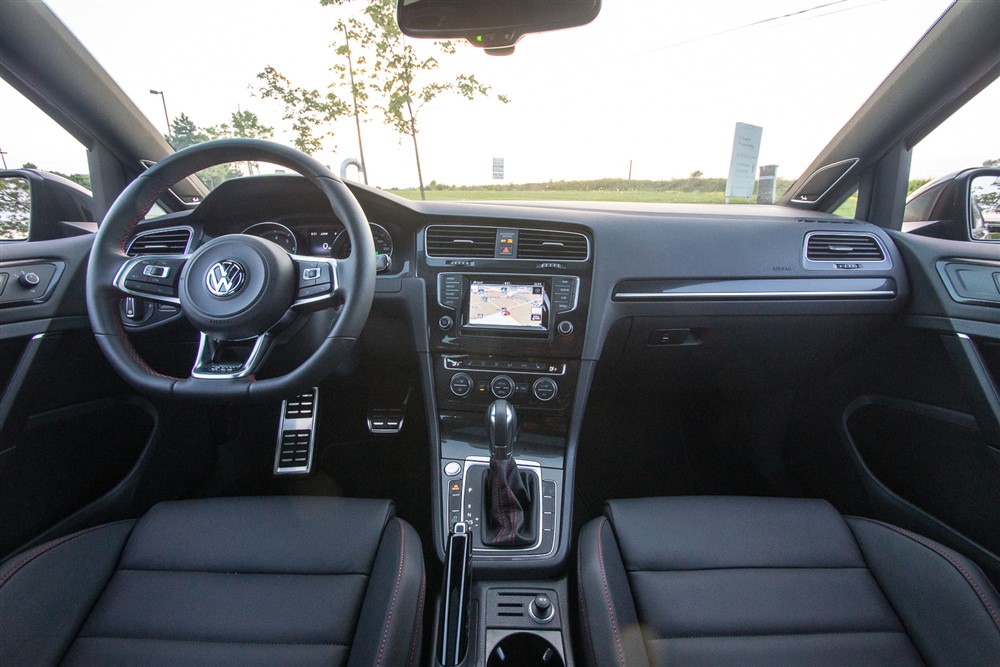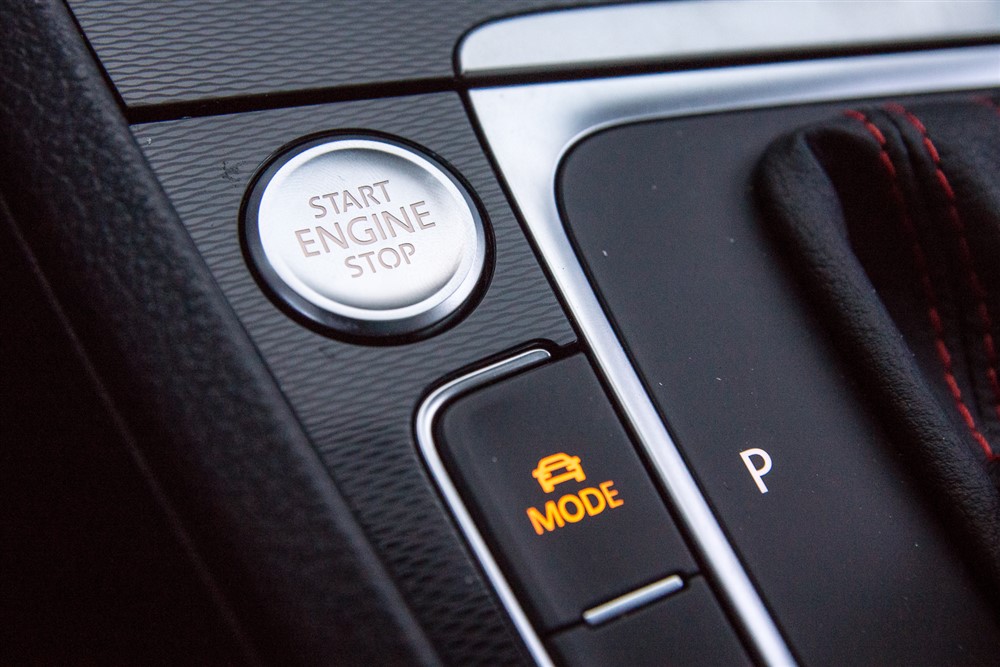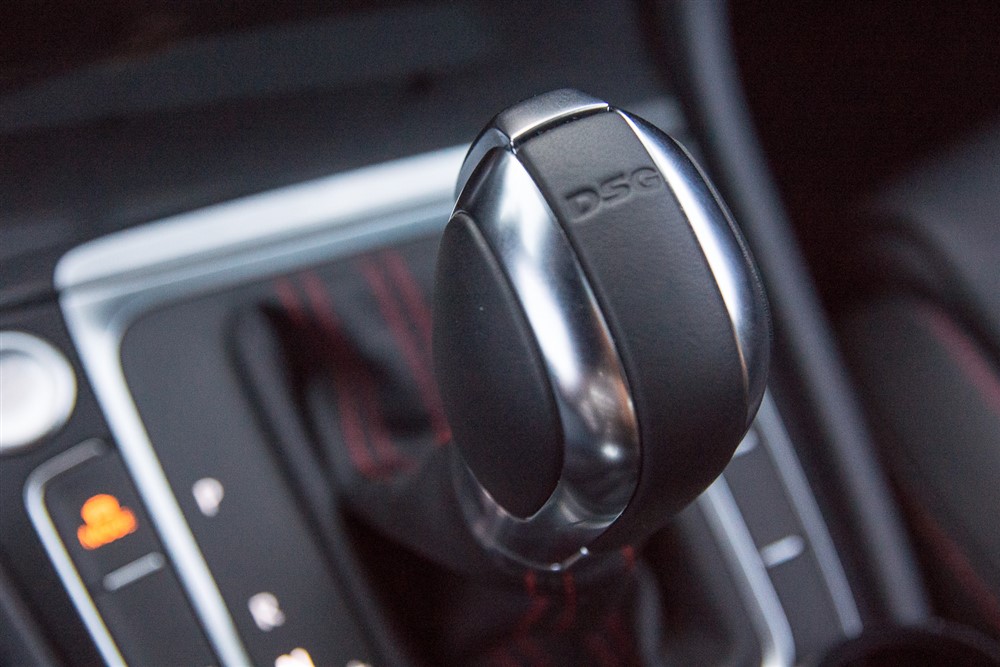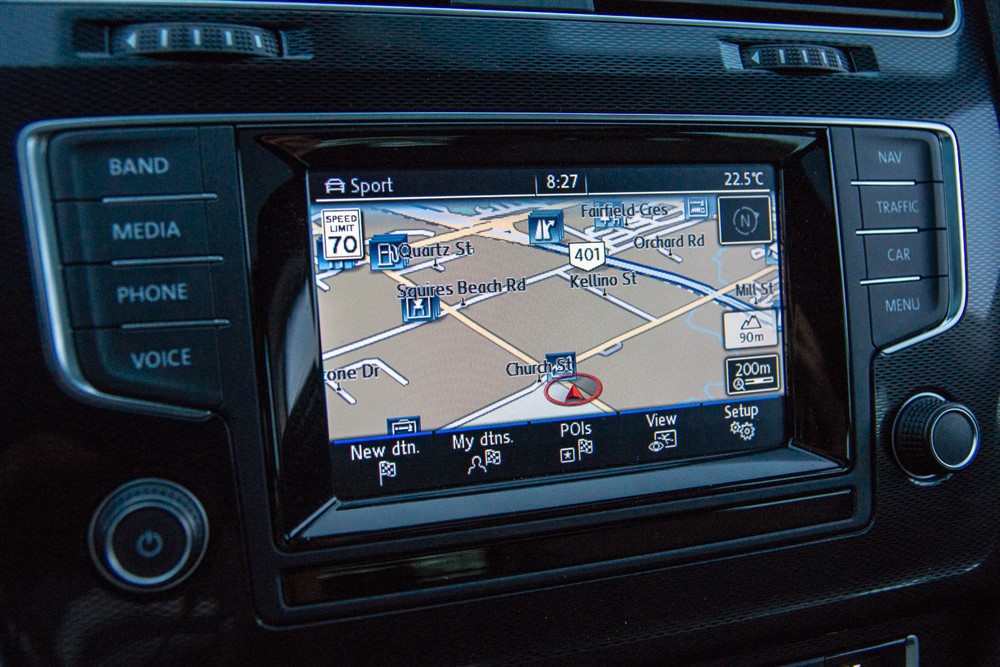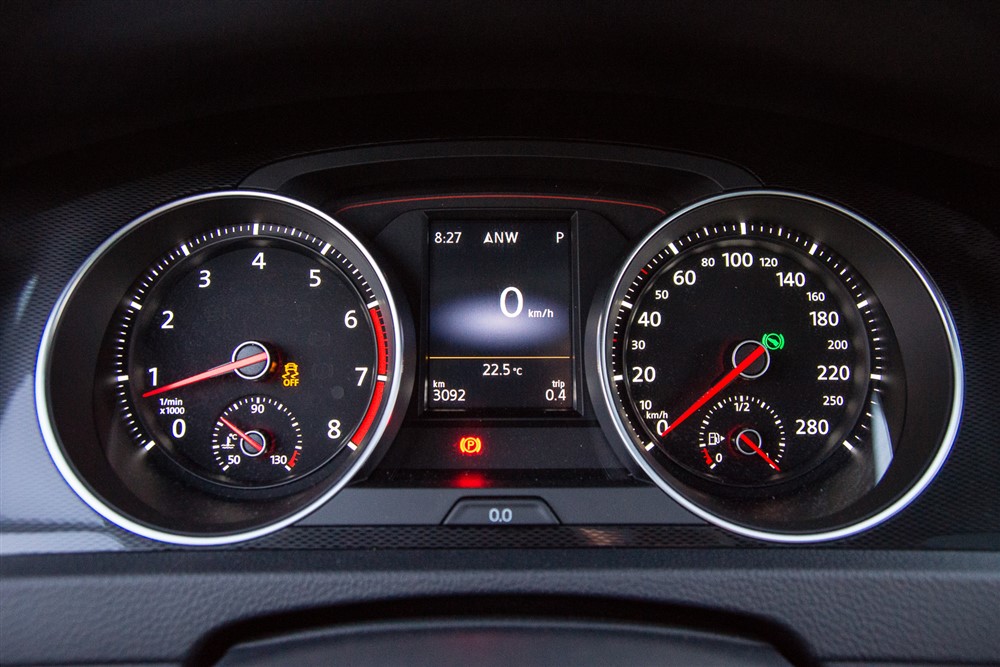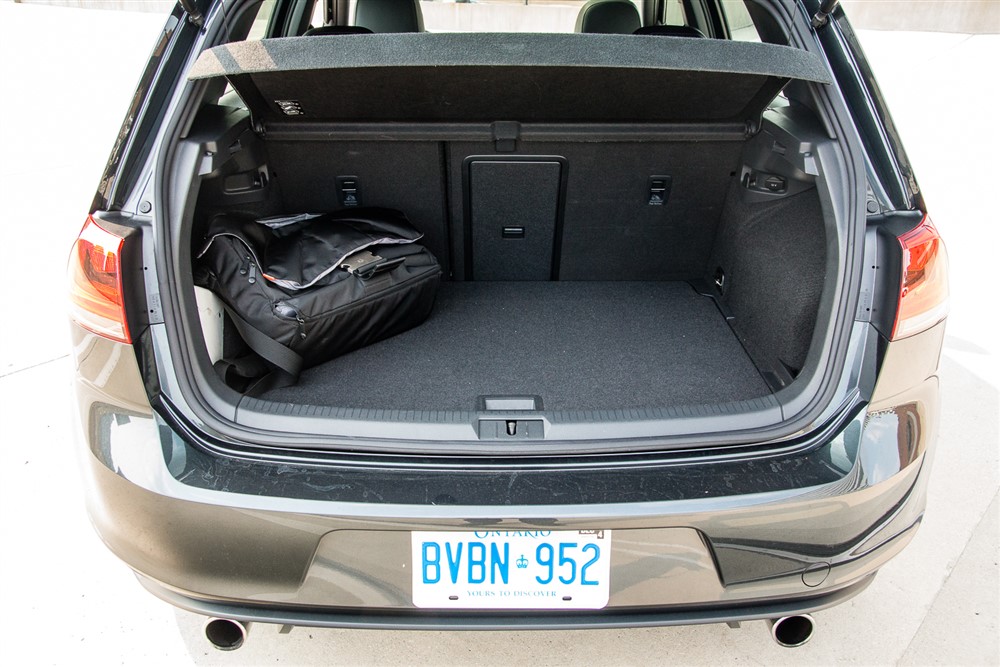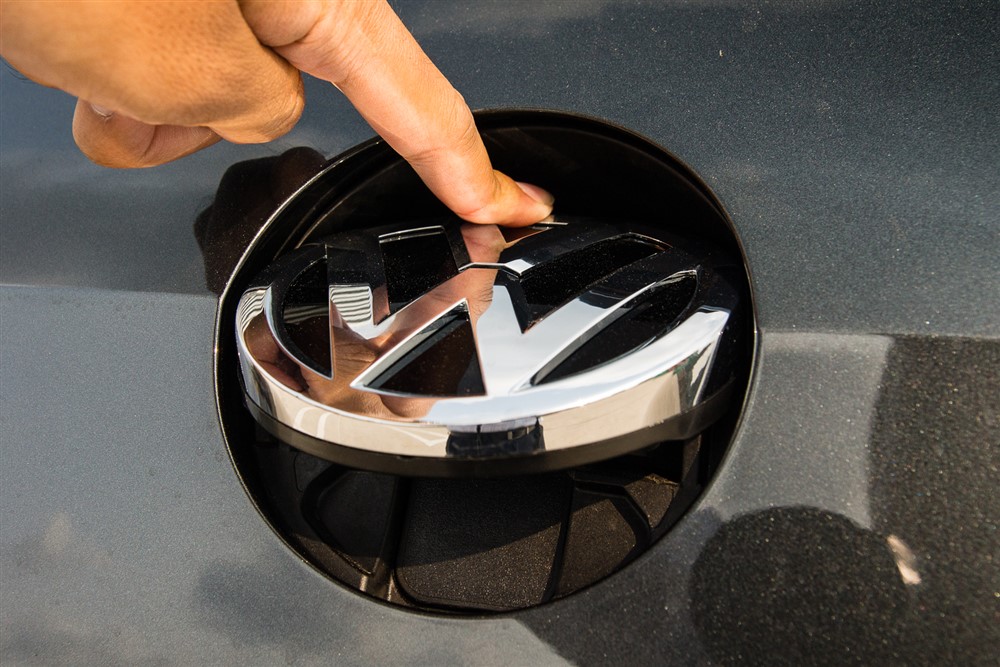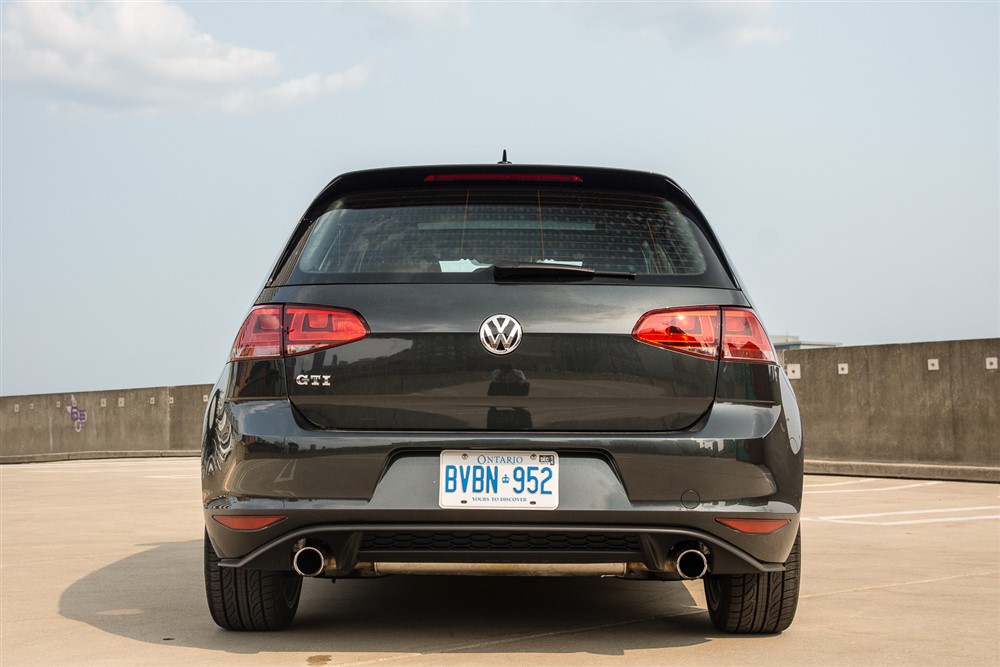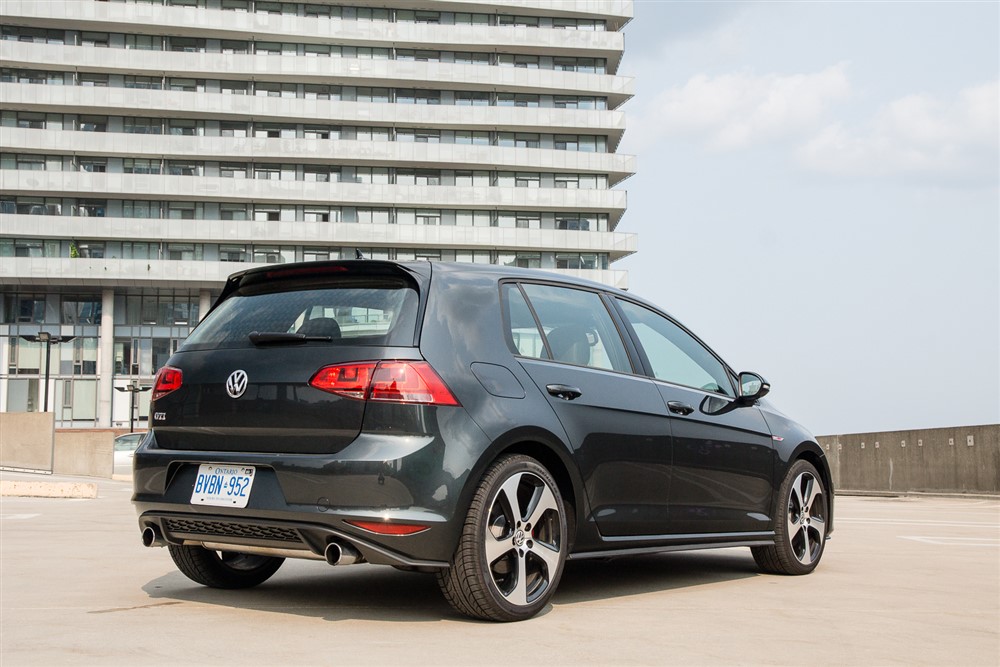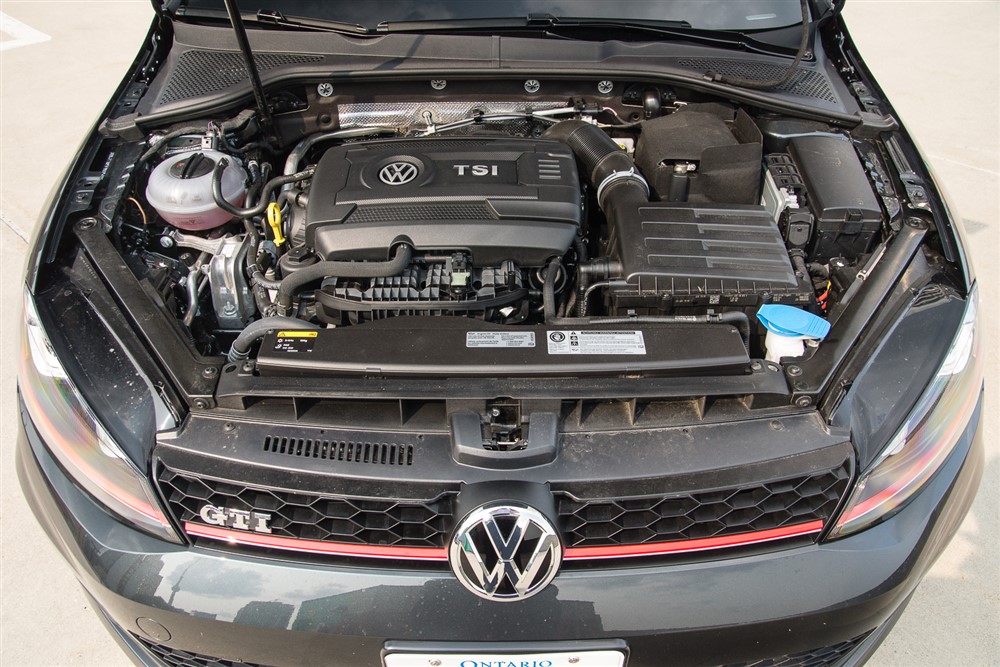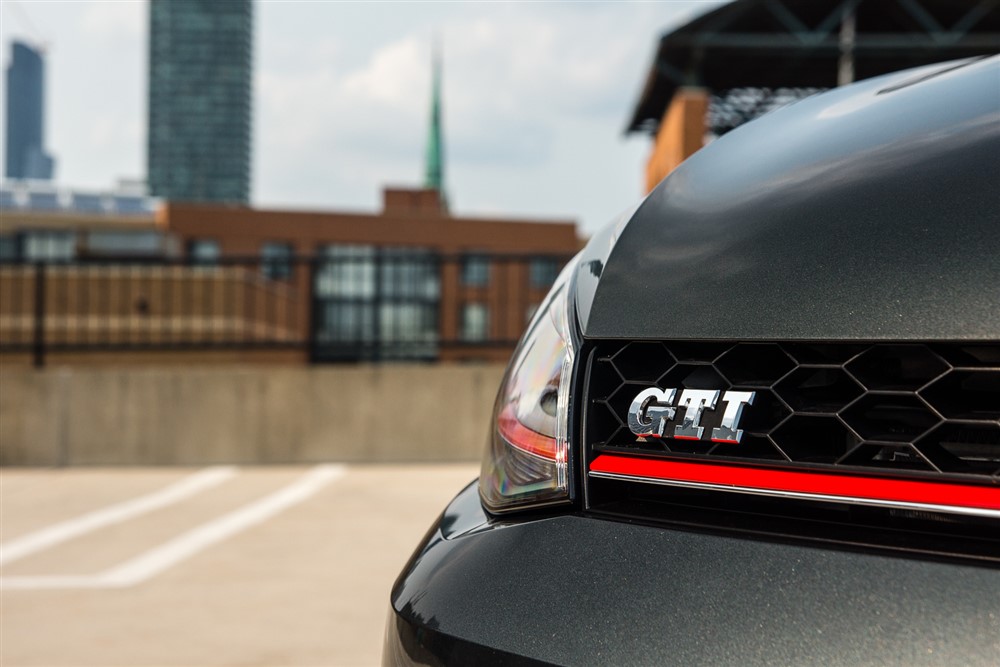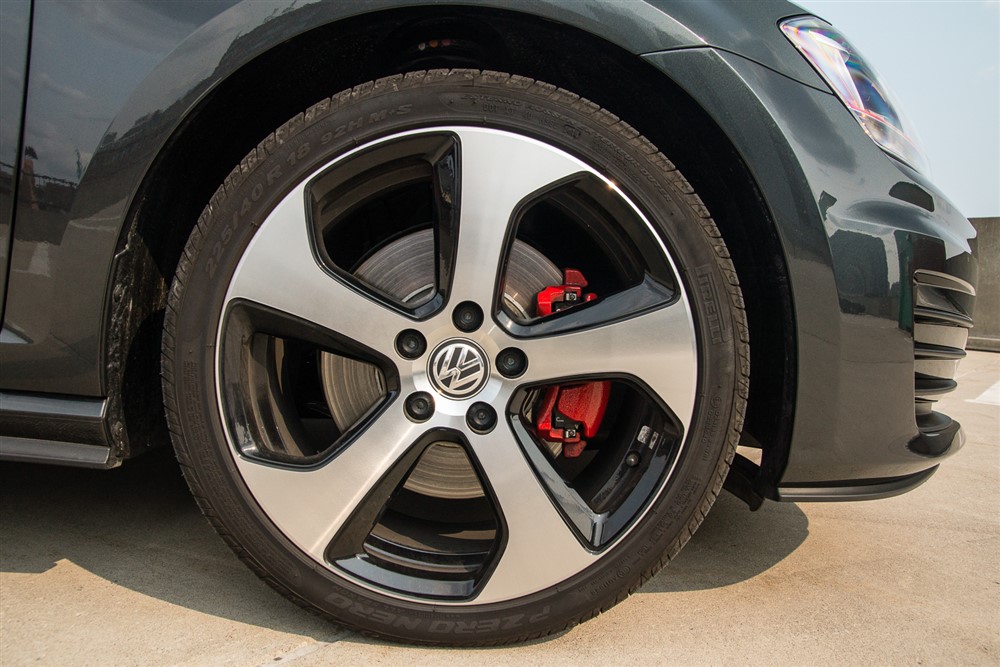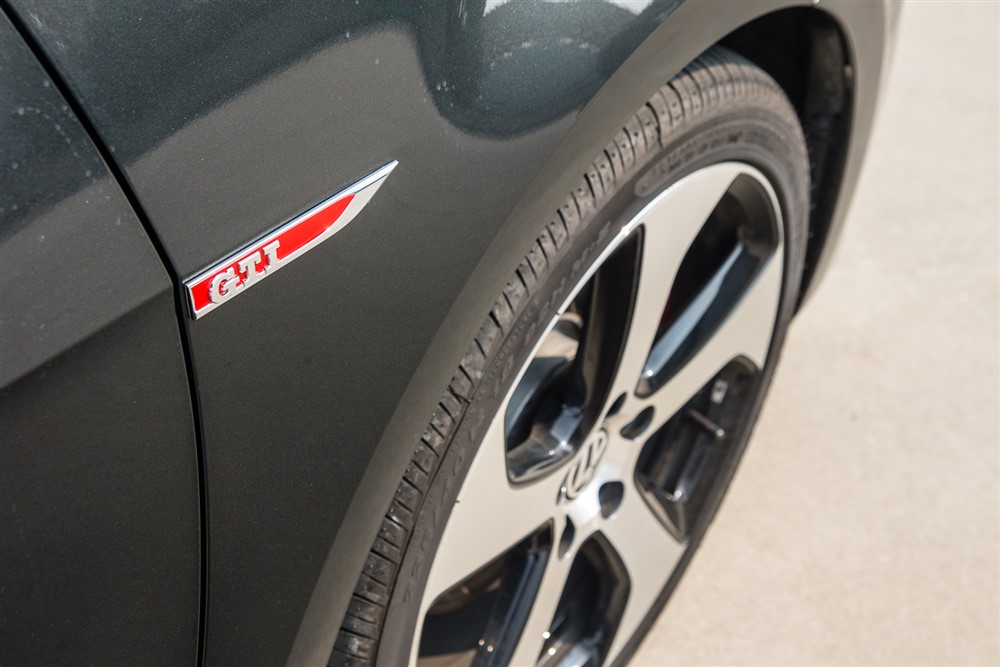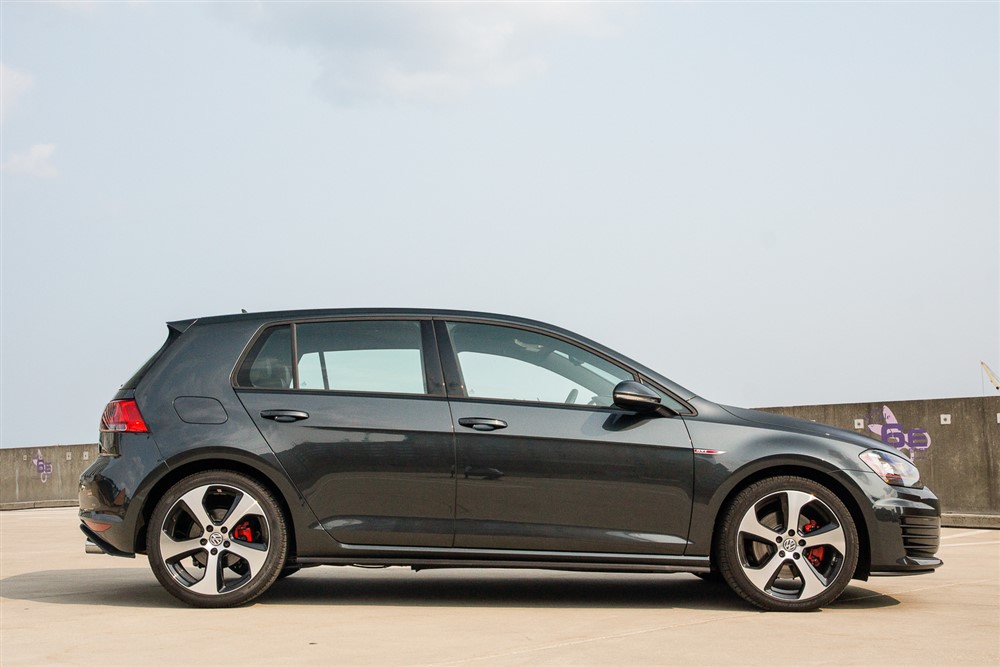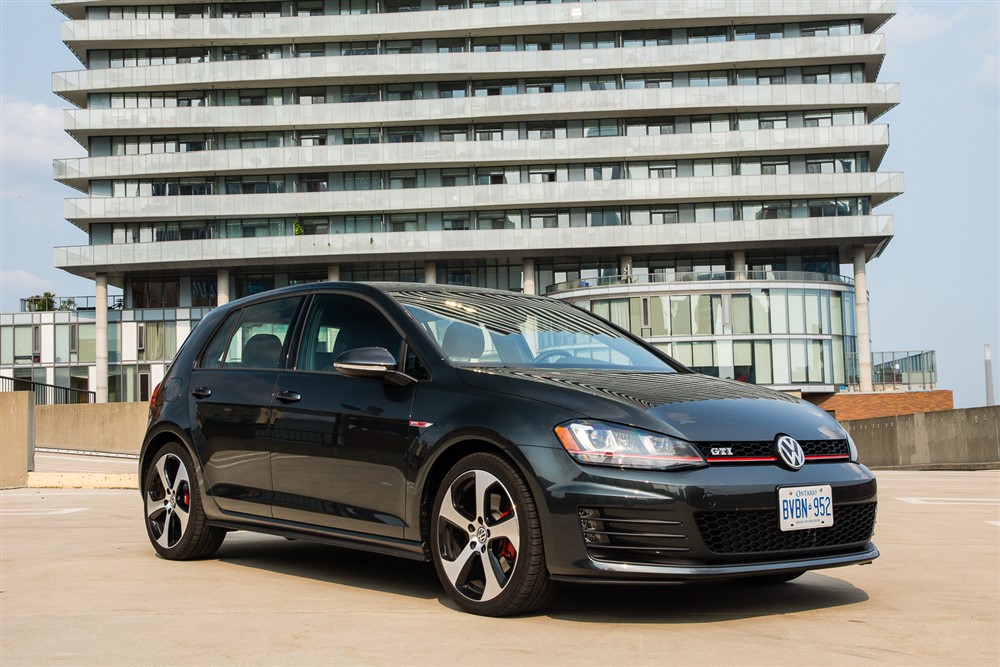It is generally accepted that the Volkswagen GTI single-handedly created the “hot hatchback” market in North America. Dating way back to about 1976, the original Mk1 GTI built on the Golf and introduced a simple formula that would be emulated for decades to come: take your smallest economy car and give it all the high-performance bits sitting on the shelf. It is really a winning formula – maximize fun while retaining the practicality that hatchbacks provide.
Volkswagen has stuck to a fairly conservative evolutionary approach to their Golf – subsequent generations, while they did get bigger and heavier, more or less retained the same ethos behind the hot hatchback. Volkswagen, thanks in part to their influence from Audi, has gradually moved the Golf and GTI upmarket as the years went on. Now in its seventh generation, some argue that they’ve lost their “hot” touch. Has it gotten too big, too soft, and too Audi-like? I picked up the latest 2015 Volkswagen GTI, in a shade of Carbon Steel Metallic, and began my week trying to see who would be right: the internet, or Volkswagen?
If you put a sixth-generation (Mk6) and current Mk7 GTI together, side-by-side, I think the casual observer may have a slightly difficult time telling the two apart. The Golf shape remains for 2015, but there are a few more chiselled lines here and there. The wheelbase is stretched by almost 6cm, which pays dividends in rear-seat passenger legroom, and overall length of the GTI grows by about 4cm. The headlights and taillights are a little less rounded and introduce a few more straight angles. A new set of 18” wheels (codenamed “Austin”) is a welcome styling change as well.
The front-end gains upgraded LED fog lights that sit behind some curiously busy looking “fins”. Their aerodynamic contribution may be questionable, but it’s interesting to note that these fins look like they are straight off the rear of an Audi R8, specifically under the taillights. Consider it an interesting nod to one of the flag-bearers in the VWAG family. Overall, in typical VW fashion, the GTI is a cleanly-designed, yet conservative update. Not offensive in the slightest, and unmistakable for anything but a GTI.
Inside, more conservative evolution from Volkswagen. Those familiar with the Golf lineup and its evolution over the years will be at home in the new GTI. The sporty flat-bottom steering wheel is nice to get your hands on. The satellite navigation included in the Technology package on my tester is much more responsive than the unit featured in the outgoing car. Perceived materials quality and assembly quality are top-notch for the class. Those who put an impeccably finished interior high on their list of priorities will love the GTI. Again, thank the Audi influence here.
One new feature lives beside the shift lever for the transmission. Pressing it toggles the GTI through a Sport mode which tightens up throttle response, transmission tuning, and powertrain sound delivery. VW amps up the sound in Sport mode by making the induction noise much more aggressive. It is a pretty good sound, and pretty convincing as it doesn’t sound like it’s just coming from the speakers.
Considering how conservative some of the GTI’s updates are, it’s a little surprising to discover that it rides on an all-new platform. Called the MQB platform, it brings a host of updates (namely stiffer construction and lighter weight), but more importantly, allows VW to simplify some attributes in production, like a common mounting strategy for the engine, transmission, axles, and even where the pedals go in the driver’s foot well. Time saved building cars is money saved for VW. The stiffer platform also allows for better overall driving dynamics. The suspension can be more effective at coping with irregularities in the road, all while still maintaining a supple ride quality. The GTI’s steering is typical VW: accurate, decently weighted, but just slightly numb at the same time. Something like a Scion FR-S or Subaru BRZ will deliver more feedback to your hands, for example.
One item for enthusiasts: the “ESC Sport” mode is activated by holding the traction control button, but it doesn’t completely disable the electronic stability control – it just raises the thresholds to be a little less obtrusive. Some may prefer the ability to “turn everything off”, but the GTI won’t let you do that. A quirk about the exterior that you only notice while inside: the rear-view reverse camera, available on the Autobahn package, is quite loud when activating. This little motor flips up the rear VW logo to let the camera peer out into the world. It’s the same item you’d press in to open the rear hatch.
Motivating the GTI is a 2.0L TSI engine that we’ve come to know very well. TSI in this case stands for Turbo Stratified Injection, which encompasses a suite of engine displacement downsizing, forced induction, and direct injection. The result, in theory, is improved power and performance, as well as improved fuel efficiency. Like many other parts in the GTI, this 2.0T engine will be familiar to many. It produces 210 horsepower and 258 lb-ft of torque. My particular test car came equipped with VW’s excellent DSG double-clutch gearbox. Shifts between gears are incredibly quick and crisp, and the transmission’s programming makes full use of the wide torque peak. Turbo lag is there, but not much – you can call on more urgent downshifts by activating the Sport mode, or by tugging on the shift paddles behind the steering wheel. A brake-based limited-slip system that VW calls XDS+ helps keep understeer at bay.
One of the ideas behind the hot hatchback is the ability to have some fun while managing not to abuse your wallet so much. Fuel efficiency is high on everybody’s lists nowadays, and the GTI delivers. VW rates the GTI with the DSG automatic transmission at 9.5L/100km in the city and 7.2L/100km on the highway. I drove around 700km of mixed driving in my week with the GTI, and averaged 7.6L/100km. Impressive numbers, considering how useful and enjoyable the GTI can be in your life. The fuel tank will accept 50L of premium fuel.
Volkswagen prices the GTI with Autobahn package at a starting price of $32,895. Add $1,400 if you opt for the DSG automatic transmission. It comes pretty well-equipped at this price – you get auto on-off HID low-beam headlights with VW’s Adaptive Front-light System which swivels the light output as you dial in more steering angle. You also get the standard suite of technology like Bluetooth phone integration, push-button start, dual-zone automatic climate control, and the full gamut of safety system acronyms. An upgraded audio system, tuned by Fender, adds a subwoofer for more low-end punch.
My tester featured the Leather package, which adds heated leather seating surfaces, as well as the Technology package. This package gives you satellite navigation and a forward collision warning system. These two option packages, as well as the DSG transmission, bring the as-tested MSRP to $36,085 before taxes and dealer fees. This mixes the GTI in with some serious company – the Focus ST is within $1,000 when looking at manufacturer pricing. The Subaru WRX, while not a hatchback (for now…) is also nearby, trading some versatility and some premium interior finish for its all-wheel-drive system.
The GTI, for many years, pursued the “Premium” feel, long before it was fashionable for the competition to do so. Top-notch build quality and materials, as well as a well-rounded, “do everything well” demeanor meant that not only owning a GTI made suggestions to others about your thirst for fun, it also suggested restrained and mature good taste. Some of its competitors do a better job at focusing on the driving experience, but they trade away other items to do it. Everybody has different priorities and expectations in what they look for, but this hot hatchback from Volkswagen gives you probably the best balance of “everything” in this very competitive class.
2015 Volkswagen GTI Gallery







